There’s a reason why people flock to Italy for the food. Whether it’s the handmade pasta in Rome, the wood-fired pizza in Naples, or the vibrant seafood along the Amalfi Coast, Italian cuisine is a love letter to simplicity, balance, and high-quality ingredients. But what most Americans don’t realize is this: much of what we call “Italian food” in the United States would leave actual Italians utterly horrified.
Walk into any American-Italian restaurant and you’re likely to be served dishes drenched in heavy cream, overloaded with garlic, or smothered in cheese—and none of that would pass the test in a traditional Italian kitchen. In fact, many of the most popular “Italian” menu items in the U.S. are completely American inventions, born from a mix of immigrant adaptation and local taste preferences. The result? A cuisine that may be delicious, but is a far cry from its authentic roots.
That’s where this guide comes in. If you’re heading to an Italian restaurant or trying to elevate your own pasta night at home, this is your cheat sheet for knowing what to skip—and what to order instead. We’re breaking down 8 common Italian-American menu items that are more myth than meal, along with 8 authentic alternatives that Italians actually eat and love.
Some of the dishes you’ll recognize immediately—like Chicken Parmesan or giant spaghetti-and-meatballs—but others might surprise you. You’ll learn the origin stories behind these American adaptations and discover what real Italian versions look (and taste) like.
Ready to stop drowning your pasta in cream and start cooking (or ordering) like a Roman nonna? Let’s set the record straight—one bite at a time.
1. Skip: Fettuccine Alfredo Drowning in Cream
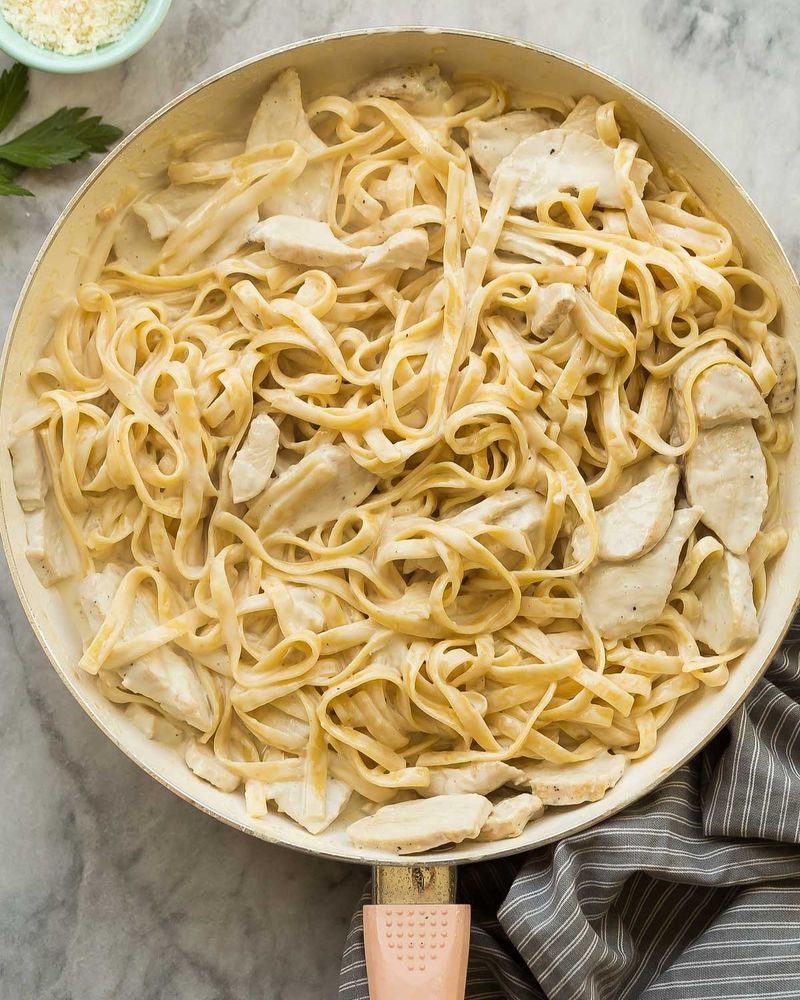
The American version of Fettuccine Alfredo bears little resemblance to its Roman ancestor. Created in America, this dish typically features pasta swimming in heavy cream, butter, and sometimes flour—creating a thick, rich sauce that would make Italians cringe.
The calorie count often exceeds 1,000 per serving, making it more of an indulgence than a regular meal. Many restaurants add chicken or shrimp, further distancing it from anything you’d find in Italy.
Most shocking to pasta purists: authentic Italian pasta dishes are meant to showcase the pasta itself, not hide it under mountains of sauce.
2. Try Instead: Fettuccine al Burro
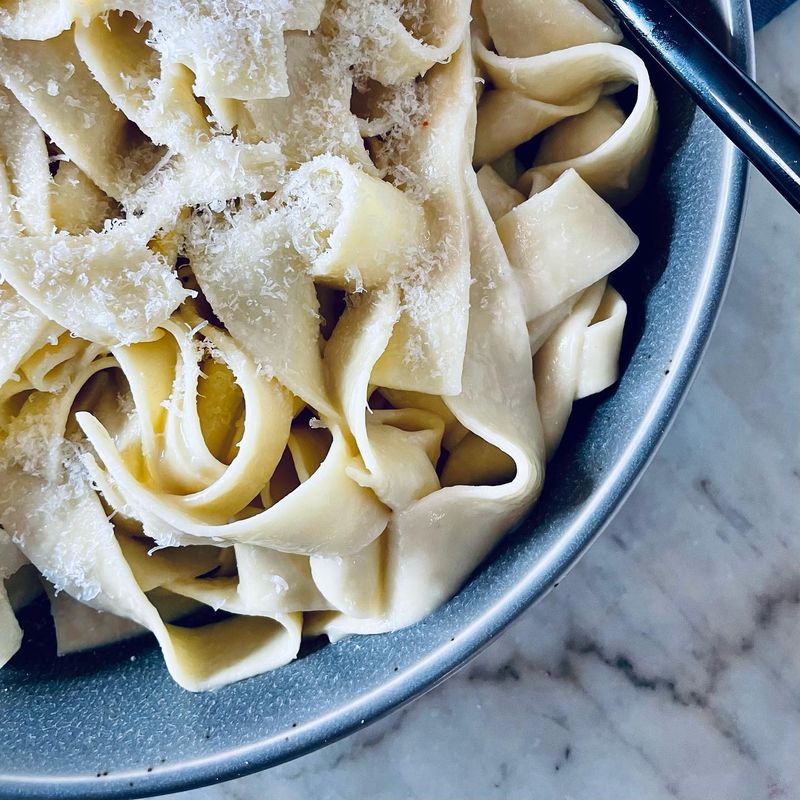
The original Roman dish that inspired Alfredo is elegantly simple. Freshly made fettuccine tossed with butter and Parmigiano-Reggiano cheese—that’s it! No cream, no garlic, no chicken.
Legend has it that restaurant owner Alfredo di Lelio created this dish in 1914 for his pregnant wife who had lost her appetite. The butter-cheese mixture forms an emulsion with the pasta’s starchy cooking water, creating a silky, light coating rather than a heavy sauce.
When made properly, the pasta remains the star while the butter and cheese enhance rather than overwhelm it. Pure Italian simplicity at its finest!
3. Skip: Spaghetti with Giant Meatballs
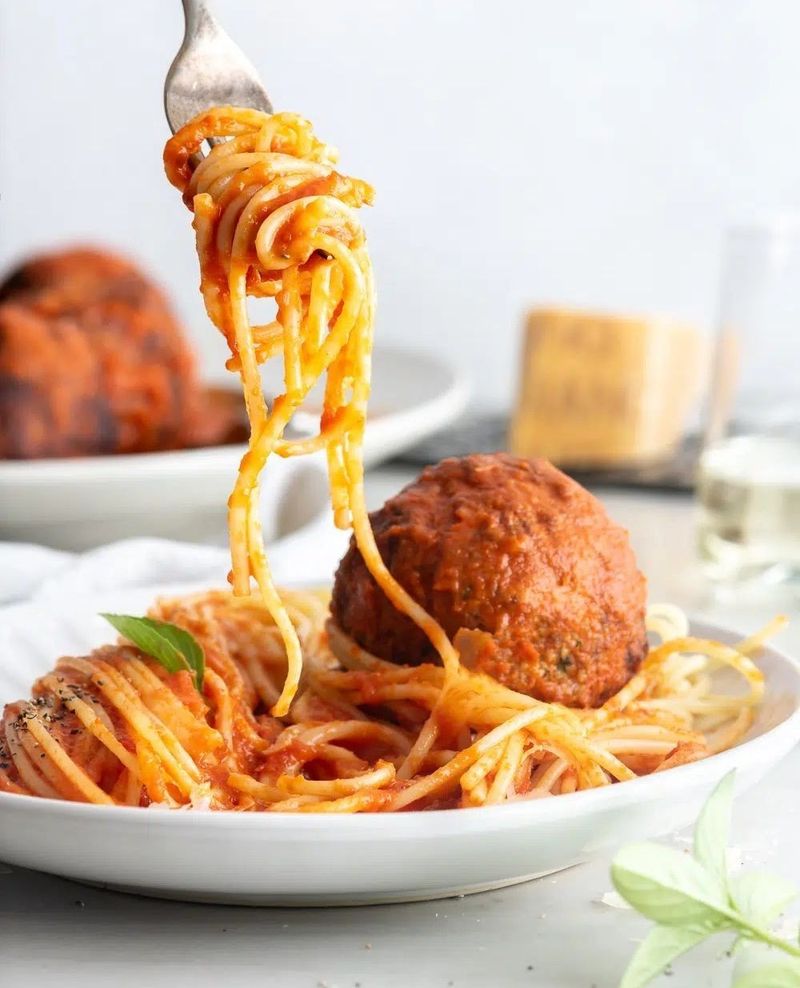
Those softball-sized meatballs perched atop a mountain of spaghetti? Pure American invention. You won’t find Italians eating enormous meatballs with their pasta—it’s considered strange to combine the two in a single course.
American meatballs tend to be much larger, packed with breadcrumbs, and sometimes contain unusual additions like bell peppers or excessive garlic powder. The sauce typically comes from a jar and simmers for far less time than authentic Italian ragù.
This dish symbolizes how Italian food was adapted to suit American tastes and ingredient availability when immigrants arrived in the early 20th century.
4. Try Instead: Polpette al Sugo
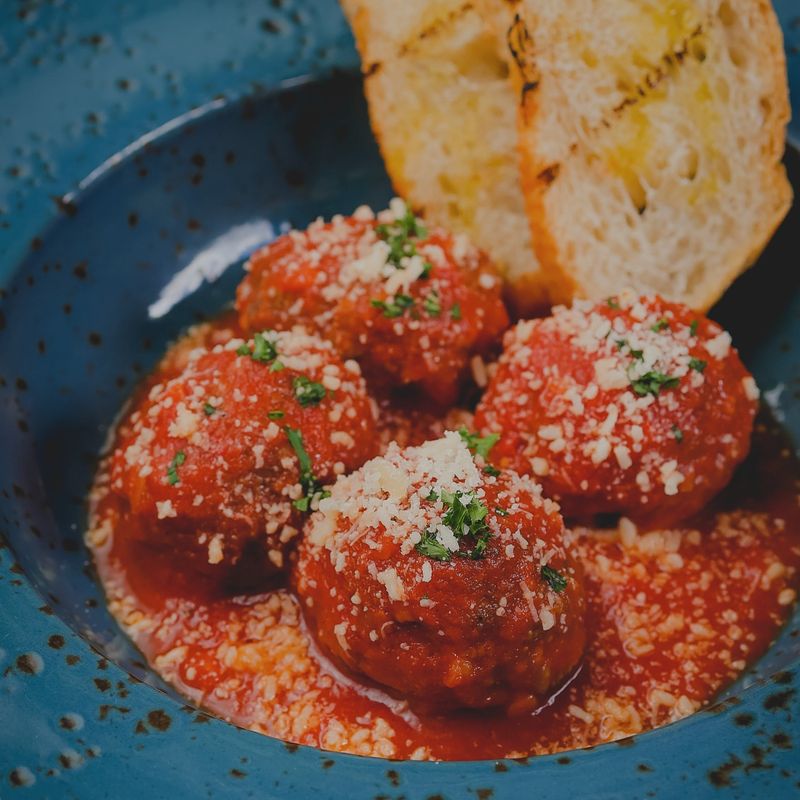
Authentic Italian meatballs (polpette) are typically served as their own course—not on pasta. These tender, golf ball-sized treats are made with quality ground meat, minimal breadcrumbs, parsley, and grated Parmigiano-Reggiano.
Polpette are often served as a second course after pasta, accompanied by a small amount of tomato sauce and perhaps some crusty bread for dipping. Some regions serve them simply fried with no sauce at all.
The texture is remarkably different from American versions—lighter, more delicate, and made with a higher proportion of meat to fillers. Each region of Italy has its own variation, making this dish a wonderful exploration of regional Italian cooking.
5. Skip: Chicken Parmesan
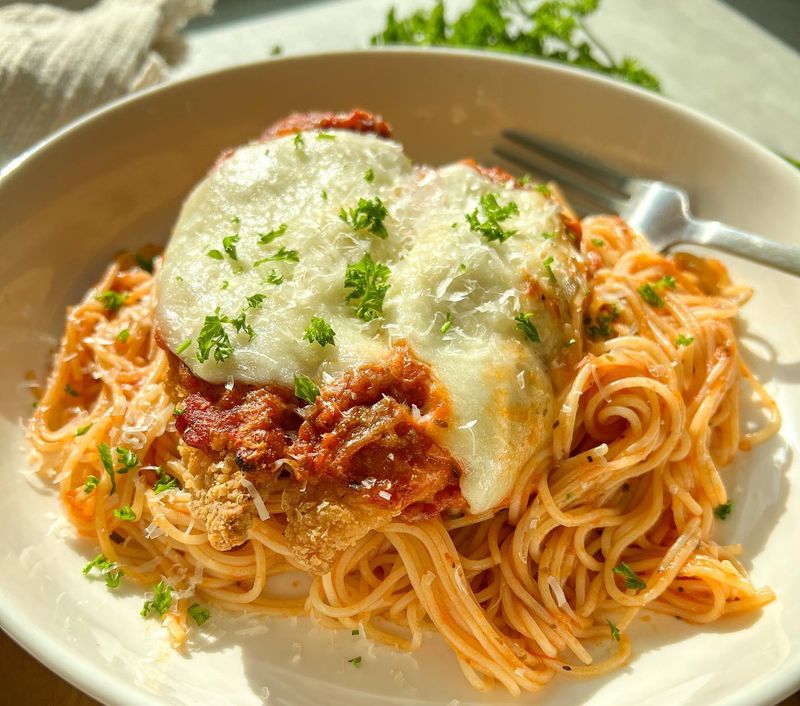
Chicken Parmesan represents one of the greatest Italian-American inventions—but you won’t find it in Italy. This breaded chicken cutlet smothered in tomato sauce and melted mozzarella emerged from Italian immigrant communities in the northeastern United States.
Italians rarely combine chicken with pasta or cheese in traditional cooking. The heavy breading, excessive cheese, and thick sauce create a dish that’s delicious but completely foreign to authentic Italian cuisine.
The original inspiration likely came from melanzane alla parmigiana (eggplant parmesan), which Italian immigrants adapted using more readily available chicken when eggplant was scarce in America.
6. Try Instead: Cotoletta alla Milanese
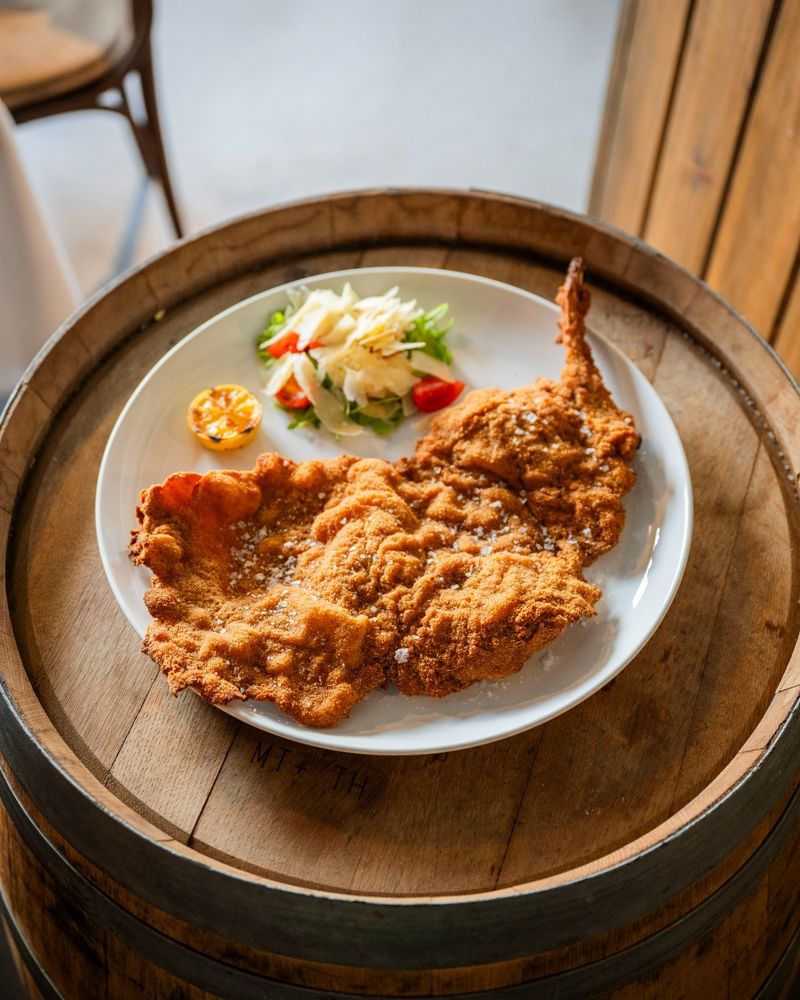
The elegant ancestor to breaded cutlets worldwide, Cotoletta alla Milanese features a thinly pounded veal cutlet (though chicken is sometimes used) coated in breadcrumbs and pan-fried in clarified butter. No tomato sauce, no melted cheese—just pure, simple flavors.
Dating back to 12th century Milan, this dish showcases a perfectly crisp exterior while maintaining juicy, tender meat inside. Traditionally served with a lemon wedge and perhaps some arugula salad on the side.
The key differences from American versions include using high-quality meat, real breadcrumbs (not packaged), and frying in butter rather than oil. The result is lighter, more refined, and lets the quality of ingredients shine.
7. Skip: Garlic Bread with Tons of Butter
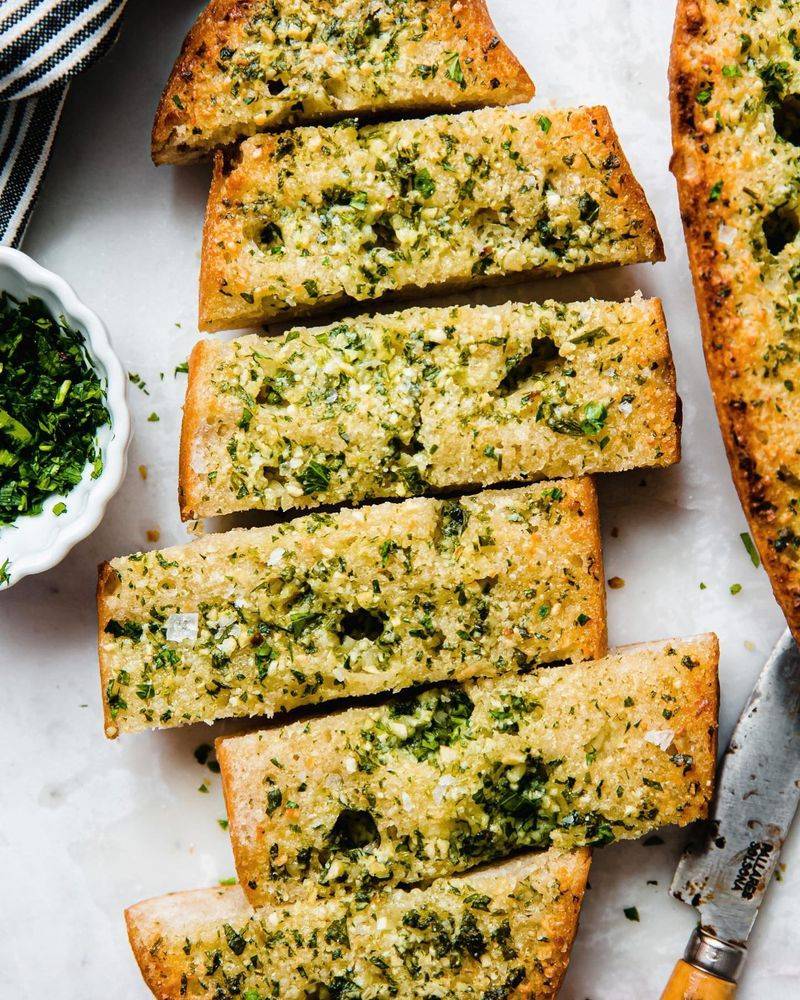
That buttery, garlic-laden bread slathered with herbs and sometimes cheese? Another American creation you won’t find on Italian tables. The excessive butter, garlic powder, and dried herbs create a flavor profile completely foreign to Italian cuisine.
Italians value the quality and flavor of their bread too much to mask it with such heavy toppings. Traditional Italian bread often contains no salt at all, specifically designed to complement the flavors of a meal rather than compete with them.
American garlic bread emerged as a way to use up day-old bread and appeal to American preferences for stronger flavors, becoming a staple in Italian-American restaurants by the 1950s.
8. Try Instead: Bruschetta al Pomodoro

Pronounced “broo-SKET-ta” (not “broo-SHET-ta”), this Tuscan appetizer represents how Italians actually enjoy their bread. Slices of rustic bread are toasted, lightly rubbed with a raw garlic clove, then drizzled with high-quality extra virgin olive oil.
The classic topping features diced fresh tomatoes, basil, and perhaps a pinch of salt. The garlic flavor comes from that gentle rub—enough to enhance without overwhelming.
Regional variations might include toppings like cannellini beans, olive paste, or cured meats, but all maintain the principle of simplicity. This antipasto celebrates the quality of each ingredient rather than drowning them in butter or cheese.
9. Skip: Italian Dressing from a Bottle
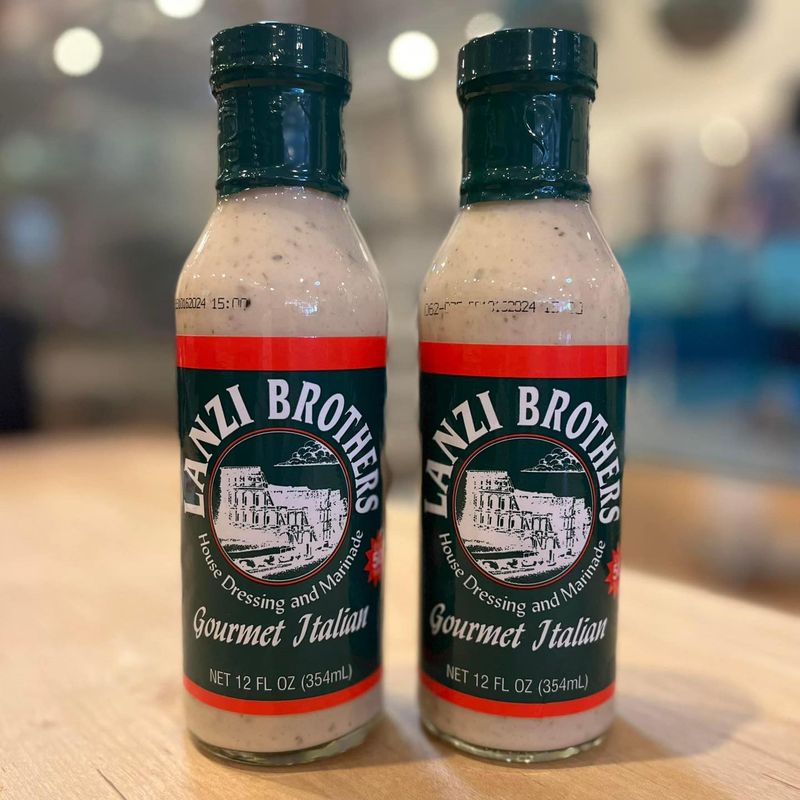
Those bottles of “Italian dressing” with their distinctive herb-flecked appearance have nothing to do with how Italians dress their salads. Packed with preservatives, sugar, and dried herbs, these concoctions were created for the American market.
Most shocking to Italians would be the pre-mixed nature of these dressings. In Italy, olive oil and vinegar are applied separately at the table, allowing each diner to balance flavors to their preference.
The herb-heavy profile of American Italian dressing emerged from Italian-American restaurants seeking to create a signature flavor that would appeal to American palates accustomed to creamy, sweet dressings.
10. Try Instead: Insalata with Oil and Vinegar
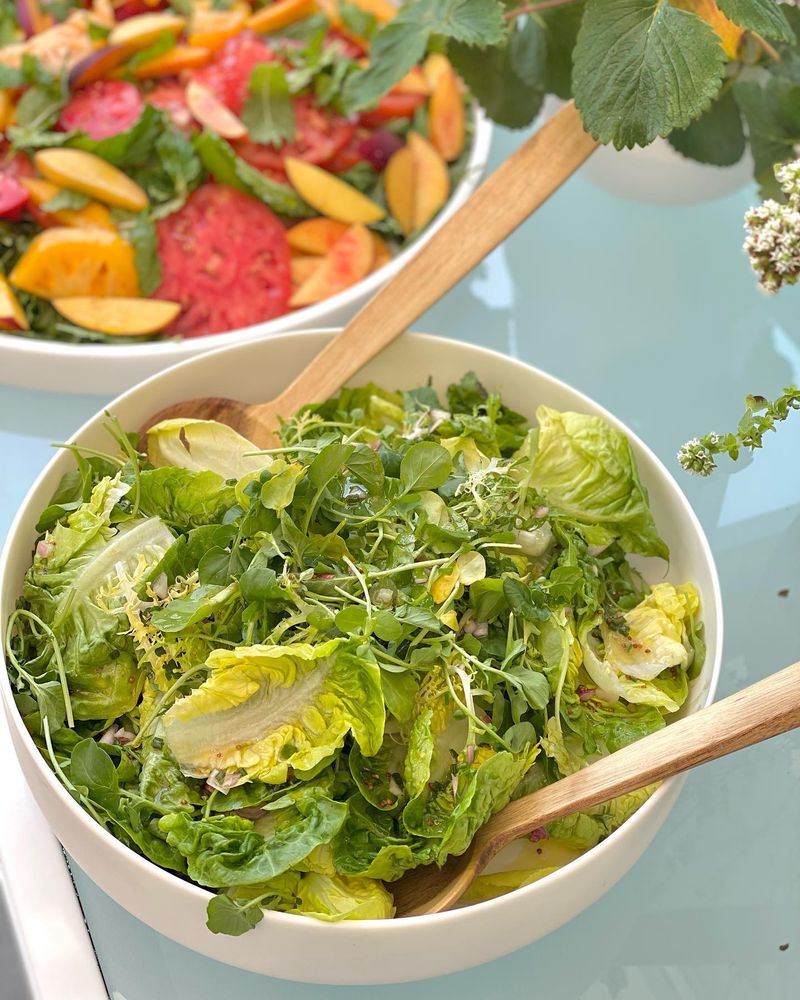
Italian salad preparation couldn’t be simpler—or more delicious. Fresh seasonal greens are dressed with nothing more than high-quality extra virgin olive oil, a splash of wine vinegar or lemon juice, and a pinch of salt.
No measuring spoons or shaking required; Italians dress their salads by eye, tasting as they go. The oil is always added first and tossed to coat the leaves, followed by the acid.
This minimalist approach highlights the fresh ingredients rather than masking them. The salad arrives at the table undressed, with cruets of oil and vinegar for each person to season according to their taste—a far cry from the bottled concoctions bearing the “Italian” name in American supermarkets.
11. Skip: Pepperoni Pizza

The spicy, greasy pepperoni that tops America’s favorite pizza simply doesn’t exist in Italy. This cured meat is an Italian-American invention, quite different from any salami you’d find in Italy.
American pepperoni contains paprika and chili pepper, giving it that distinctive red color and spicy kick. The excessive grease that pools on top of pepperoni pizzas would horrify Italian pizza makers who prize balance and quality of ingredients.
While Italians do enjoy various salamis on pizza, they use them sparingly as one component among many, never allowing a single topping to dominate as pepperoni does on American pizzas.
12. Try Instead: Pizza Margherita
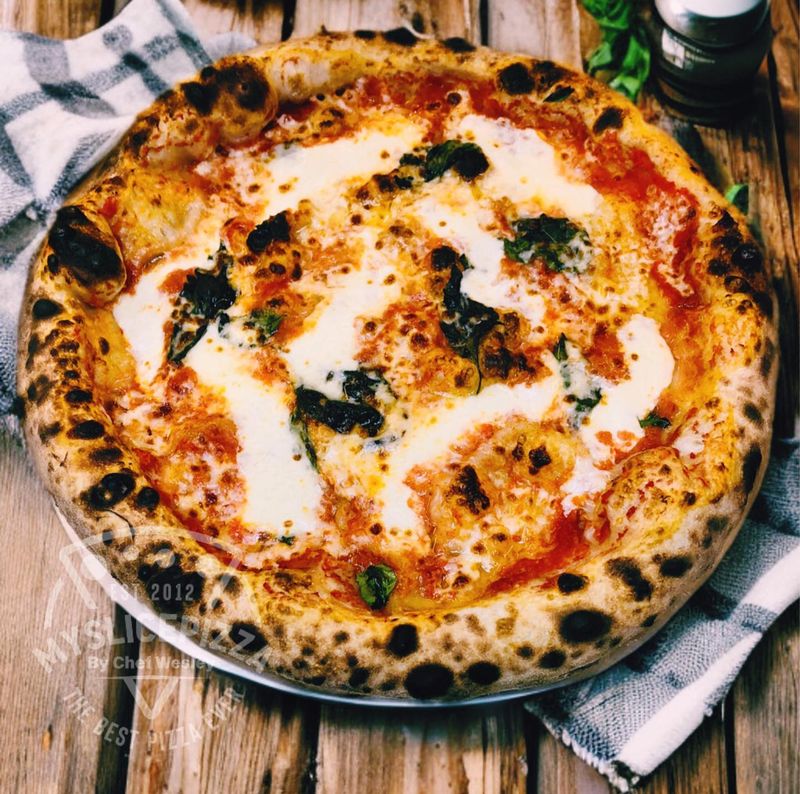
Born in Naples in 1889, Pizza Margherita represents the gold standard of Italian pizza. Named after Queen Margherita of Savoy, its red tomatoes, white mozzarella, and green basil intentionally mirror the Italian flag.
The magic lies in its simplicity and strict adherence to quality ingredients: San Marzano tomatoes, fresh buffalo mozzarella, basil, extra virgin olive oil, and sea salt on a thin, wood-fired crust. Nothing more.
Traditional Neapolitan pizza has such cultural significance that its preparation method has been recognized by UNESCO as an Intangible Cultural Heritage. The dough ferments slowly, creating a light, digestible crust with characteristic leopard-spotted char marks from the intensely hot wood-fired oven.
13. Skip: Shrimp Scampi with Pasta
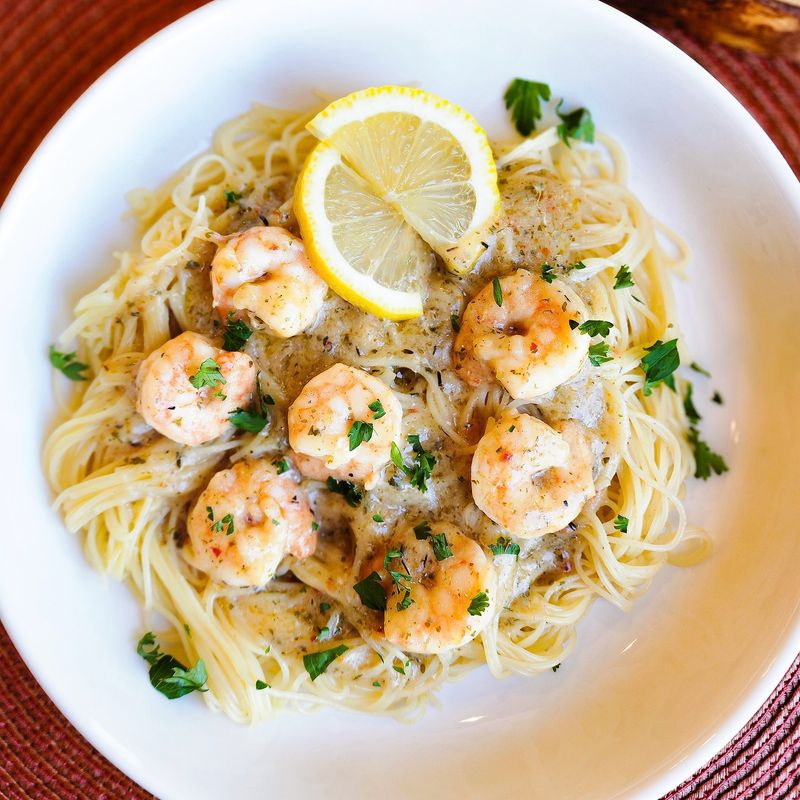
“Scampi” actually refers to langoustines (small lobster-like crustaceans) in Italian cuisine—not a cooking method. The American dish called shrimp scampi, with its butter-garlic sauce over linguine, is a complete invention that would puzzle Italians.
The redundancy of the name is particularly amusing to Italian speakers; “shrimp scampi” essentially translates to “shrimp langoustines.” The heavy butter sauce and serving over pasta represents American preferences rather than Italian traditions.
While seafood pasta dishes certainly exist in Italy, particularly in coastal regions, they typically feature olive oil rather than butter and incorporate regional ingredients specific to their locale.
14. Try Instead: Spaghetti alle Vongole
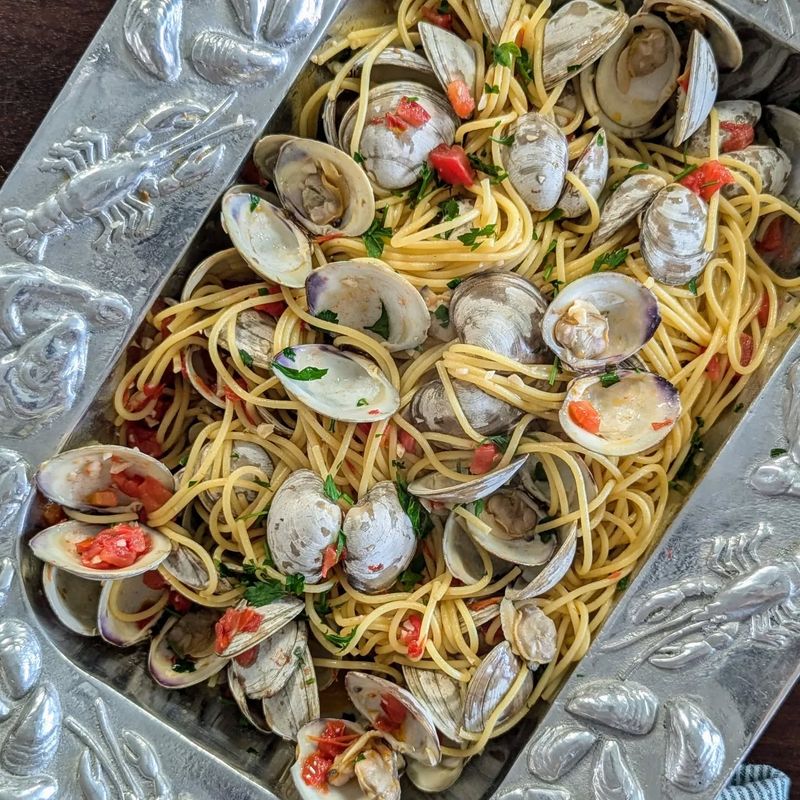
For an authentic Italian seafood pasta experience, look no further than spaghetti alle vongole (spaghetti with clams). This coastal classic from Campania showcases the Mediterranean’s bounty with elegant simplicity.
Fresh clams open directly in the pan with garlic, white wine, parsley, and a touch of peperoncino (chili flakes). Their natural juices create a light sauce that clings to perfectly al dente pasta. No cream, no butter—just the pure flavor of the sea.
The hallmark of this dish is restraint: minimal ingredients, minimal cooking time, and a celebration of the clams’ briny sweetness. Italians would never dream of adding cheese to seafood pasta, considering it a culinary crime that masks the delicate flavors.
15. Skip: Caesar Salad with Heavy Dressing

Despite its Italian-sounding name, Caesar salad was created in Tijuana, Mexico by Italian-American restaurateur Caesar Cardini. The modern American version bears little resemblance to the original, with its thick, creamy dressing and often pre-packaged croutons.
Many restaurant versions come drowning in a mayonnaise-based dressing that obscures the fresh ingredients. The addition of grilled chicken, excessive cheese, or even salmon would be considered bizarre by the salad’s creator.
Factory-produced Caesar dressings often contain ingredients never found in the original: soybean oil, corn syrup, and artificial flavors that create a standardized taste far removed from the tableside-prepared original.
16. Try Instead: Insalata Caprese
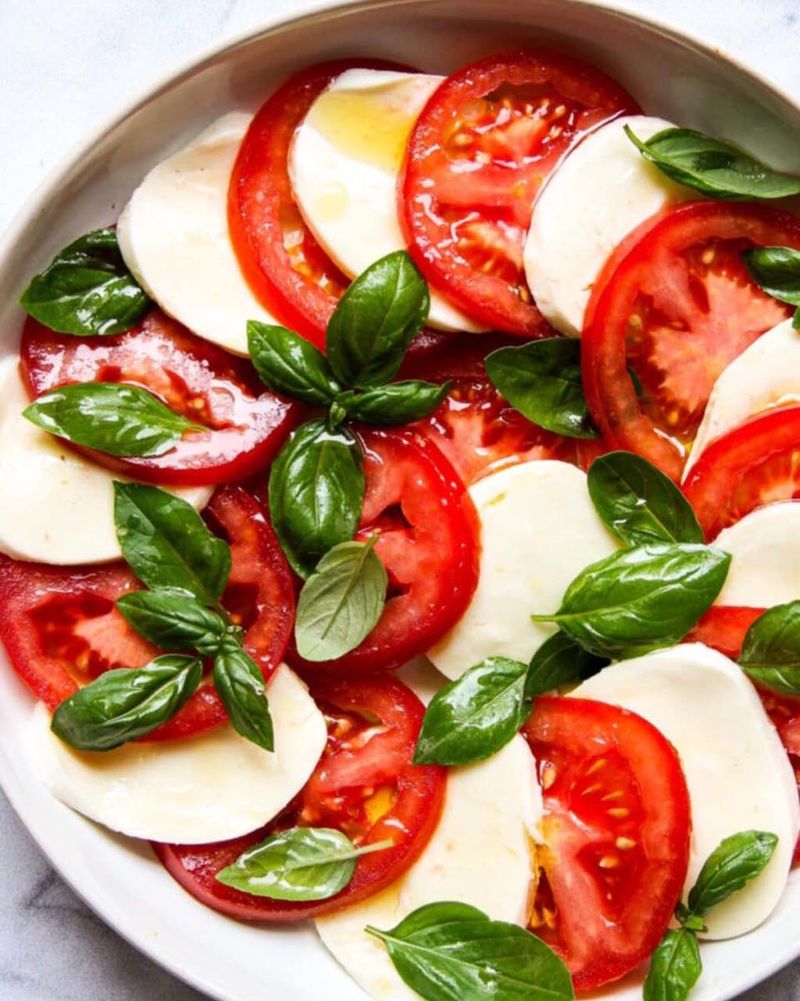
Hailing from the island of Capri, this iconic salad embodies the Italian philosophy of letting superior ingredients speak for themselves. Just three main components—ripe tomatoes, fresh buffalo mozzarella, and basil—create a perfect harmony of flavors, colors, and textures.
The only dressing needed is a drizzle of the finest extra virgin olive oil and perhaps a sprinkle of sea salt. No vinegar, no dried herbs, no balsamic glaze—additions that would make Italians wince.
Traditionally served as an antipasto (appetizer), the Caprese salad showcases Italy’s commitment to seasonal eating. Italians would only make this dish when tomatoes are at their peak, usually summer, rather than using pale, flavorless winter tomatoes.
Leave a comment